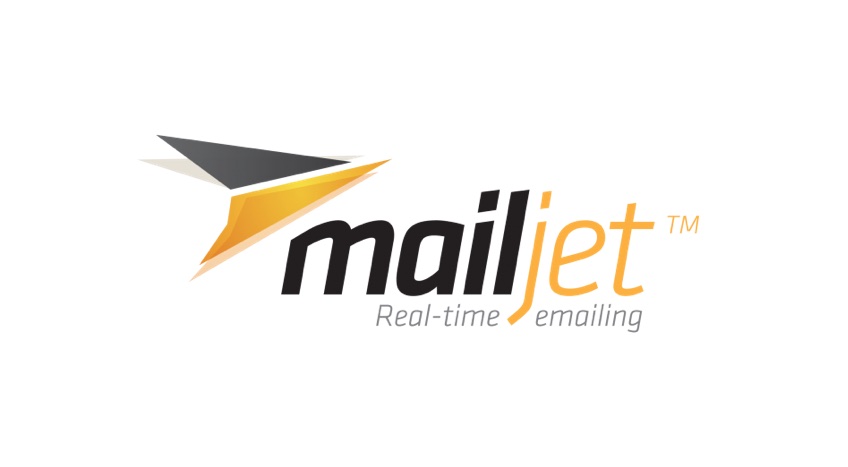In the digital marketing landscape of 2024, email marketing continues to be a pivotal strategy for businesses across the globe. Two platforms that often come up in conversations about email marketing tools are Mailjet and Sendy. Both have made a mark in the industry, but how do they stack up against each other? This comprehensive guide will take you through an in-depth comparison of Mailjet and Sendy, covering various facets that matter to businesses today. Let’s dive in and explore what makes each platform unique and which one could be the best fit for your email marketing needs in 2024.
| Mailjet | Sendy |
|---|---|
 |  |
| G2 Score – 4.0 out of 5 stars | G2 Score – 4.4 out of 5 stars |
| TrustRadius Score – 7.9 out of 10 | TrustRadius Score – Nil |
User Experience and Interface: The Gateway to Effective Email Marketing
The user experience (UX) and interface of an email marketing tool play a critical role in its effectiveness and usability. A well-designed interface not only makes the platform easier to navigate but also enhances the efficiency of creating and managing email campaigns. In this section, we’ll compare the UX and interface of Mailjet and Sendy.
Mailjet: Streamlined and Intuitive
Mailjet is renowned for its user-friendly interface. The platform is designed with clarity and simplicity in mind, making it accessible for users of all skill levels. From the moment you log in, you’re greeted with a straightforward dashboard that puts everything you need at your fingertips.
The standout feature of Mailjet’s interface is its drag-and-drop email builder. This tool allows even those with no technical background to create visually appealing and responsive emails. The process is intuitive: select elements, drag them into your template, and customize to fit your brand. This ease of use extends to its campaign management tools, where you can effortlessly segment lists, schedule emails, and track performance.
Sendy: Simplicity for the Tech-Savvy
Sendy takes a different approach. It’s a self-hosted platform, meaning you’ll need to install it on your own server. This setup might be daunting for beginners, but it offers more control for tech-savvy users who are comfortable with a bit more complexity.
Once installed, Sendy’s interface is relatively straightforward, though not as polished as Mailjet’s. It offers basic functionalities for creating and sending emails. While you won’t find an advanced drag-and-drop builder here, Sendy does provide a simple, HTML-based email editor. For those familiar with coding, this offers greater control over email design.
The Contrast in User Experience
Comparing Mailjet and Sendy in terms of user experience reveals a clear distinction. Mailjet is ideal for users seeking a hassle-free, intuitive experience with plenty of creative freedom. Its interface is designed to make email marketing easy and enjoyable.
Sendy, meanwhile, caters to a more technical audience. Its self-hosted nature and HTML-based editor offer more control at the cost of a steeper learning curve. For businesses with technical expertise, Sendy can be a powerful, cost-effective tool.
When it comes to user experience and interface, your choice between Mailjet and Sendy will largely depend on your technical comfort level and the type of user experience you’re looking for. Mailjet wins in terms of ease of use and a more intuitive interface, while Sendy appeals to those who prefer more control and a hands-on approach.
Cost Efficiency: Balancing Budget and Features
In the world of email marketing, balancing the cost against the features and benefits you receive is crucial. Both Mailjet and Sendy offer unique pricing structures and features, catering to different budgetary and functional requirements. Let’s delve into how these platforms stack up in terms of cost efficiency.
Mailjet’s Pricing Strategy
Mailjet operates on a tiered pricing model, which adjusts based on the volume of emails sent and the level of features required. This flexibility is a significant advantage for businesses of varying sizes and needs. Smaller businesses or those just starting with email marketing can opt for lower tiers, which are quite affordable and offer essential features.
One of the compelling aspects of Mailjet’s pricing is the availability of a free plan. This plan allows a certain number of emails per month at no cost, which is perfect for businesses with minimal email marketing needs or those wanting to test the waters before committing financially. As your requirements grow, you can scale up to more feature-rich plans, which include advanced segmentation, A/B testing, and dedicated support.
Sendy’s Cost Advantage
Sendy’s pricing model is distinctively different. Being a self-hosted platform, it requires a one-time purchase fee. After this initial investment, the ongoing costs are significantly lower than most cloud-based email marketing services. This is because Sendy leverages Amazon SES (Simple Email Service) for sending emails, which has very low per-email costs.
This pricing structure makes Sendy an extremely cost-effective solution in the long run, especially for businesses with large email lists. The one-time fee might seem like a significant upfront investment, but for businesses planning to use the service extensively, the savings over time can be substantial.
Analyzing Cost Effectiveness
When evaluating the cost efficiency of Mailjet and Sendy, it’s essential to consider both your short-term and long-term needs. Mailjet’s tiered pricing and free plan offer great flexibility and a low barrier to entry, making it suitable for businesses seeking a scalable solution without a significant upfront investment.
On the other hand, Sendy’s one-time purchase model, combined with the low operational costs of using Amazon SES, can lead to significant savings over time. This model is particularly advantageous for businesses with large mailing lists and those comfortable with a self-hosted setup.
In summary, if immediate cost-saving and a low entry barrier are your priorities, Mailjet is an excellent choice. However, for those looking at long-term cost efficiency and who are comfortable with a bit of technical setup, Sendy offers compelling value.
Integration and Compatibility: Enhancing Your Marketing Ecosystem
The ability of an email marketing tool to integrate with other software and services is a crucial factor for many businesses. It can greatly enhance the functionality and efficiency of your marketing strategies. Let’s examine how Mailjet and Sendy perform in terms of integration and compatibility with other systems and tools.
Mailjet’s Integration Features
Mailjet shines in its ability to integrate with a vast array of platforms and services. It offers seamless integration with popular CRM systems, e-commerce platforms, and other marketing tools. This level of integration is invaluable for businesses that rely on a cohesive ecosystem of tools to manage their marketing and sales processes.
For instance, integrating Mailjet with a CRM system allows for the synchronization of contact lists and detailed segmentation based on customer data. This leads to more personalized and targeted email campaigns. Integration with e-commerce platforms enables the automation of transactional emails and the creation of targeted promotional campaigns based on customer behavior and purchase history.
Sendy’s Approach to Integration
Sendy’s integration capabilities are a bit more limited compared to Mailjet, primarily due to its self-hosted nature. However, it does offer integration with some CRM systems and WordPress through plugins and APIs. For those with technical know-how, Sendy’s API can be used to create custom integrations, providing a degree of flexibility.
The strength of Sendy’s integration lies in its direct connection with Amazon SES, which ensures high deliverability and cost-effectiveness. For businesses already embedded in the Amazon Web Services ecosystem, this integration can be particularly beneficial.
Assessing Integration Benefits
In assessing the integration capabilities of both platforms, Mailjet undoubtedly offers a broader range of ready-to-use integrations, making it a more versatile choice for businesses that use a variety of marketing tools. Its ability to easily connect with different platforms can streamline and enhance your marketing efforts.
Sendy, while not as versatile in terms of ready-made integrations, offers sufficient capabilities for basic needs and can be a good choice for those who have the resources to develop custom integrations. Its strong suit is the deep integration with Amazon SES, which can be a major plus for businesses looking for a reliable and cost-effective email delivery service.
When it comes to integration and compatibility, Mailjet is the better choice for businesses seeking extensive, ready-to-use integrations. However, Sendy holds its ground as a cost-effective, customizable solution, especially for those comfortable with technical setups and looking for an Amazon SES-based service.
Dissecting the Pricing Spectrum
In the realm of email marketing, Mailjet and Sendy stand as prominent solutions, each offering distinct advantages and pricing models. Understanding the nuances of their pricing can significantly influence the choice of platform. This article aims to provide a detailed comparison of the pricing structures for Mailjet and Sendy, offering insights to help you make an informed decision that suits your financial capabilities and marketing strategies.
| Mailjet | Free Plan: Includes up to 6,000 emails per month (with a daily limit of 200) and unlimited contacts. Basic features like email creation and sending are included. Essential Plan: Starting at around $15/month for 15,000 emails per month. This plan removes the daily sending limit and includes online customer support, no Mailjet logo, and sub-accounts. Premium Plan: Starting at around $25/month for 15,000 emails per month. Includes additional features like segmentation, A/B testing, marketing automation, and multi-user collaboration. Custom Enterprise Solutions: Offers custom volume of emails with advanced features and dedicated support. Pricing is custom and based on specific requirements. |
| Sendy | Sendy is a self-hosted email newsletter application that integrates with Amazon SES (Simple Email Service) for sending emails. One-Time Fee: A one-time purchase price of $69, which allows you to install Sendy on your own web server. Amazon SES Costs: After purchasing Sendy, you’ll need an Amazon SES account. Amazon SES typically charges $0.10 per thousand emails sent, plus data transfer fees. This can be significantly cheaper than other email marketing services for large volumes of emails. |
Understanding Mailjet Pricing
Mailjet is recognized for its powerful email infrastructure and versatility, catering to businesses looking for scalable and reliable email solutions. Its pricing structure is primarily based on the volume of emails sent, offering flexibility to meet different business requirements.
Mailjet offers a Free plan, suitable for startups or small businesses at the beginning stages of their email marketing initiatives, providing essential features with a cap on the number of emails sent. As needs expand, the Basic plan accommodates a higher sending volume, with pricing that scales with the volume of emails sent.
For businesses seeking more sophisticated marketing tools, Mailjet’s Premium plans provide advanced features such as segmentation, A/B testing, and marketing automation. These plans are designed for businesses requiring a comprehensive email solution, with pricing that adjusts based on sending volume and feature selection.
Navigating Sendy Pricing
Sendy presents a different approach by offering a self-hosted email marketing tool that integrates with Amazon SES for sending emails. Its pricing model is unique, focusing on a one-time fee for the software and the separate costs associated with Amazon SES.
Sendy charges a one-time fee for purchasing the software, which the user can install on their own hosting server. This approach is attractive for businesses looking for a cost-effective solution over the long term, without recurring monthly fees.
After purchasing Sendy, the ongoing costs are associated with the emails sent through Amazon SES. Amazon SES operates on a pay-as-you-go model, charging based on the number of emails sent and received. This structure is beneficial for businesses with fluctuating sending volumes, as it provides cost transparency and control.
Mailjet vs Sendy: Evaluating the Pricing Models
The key difference between Mailjet and Sendy lies in their approach to pricing and the structure of their service offerings.
Mailjet’s pricing model is designed for businesses looking for flexibility, with plans that scale according to email volume. It offers a straightforward path from basic to more advanced email marketing tools, aligning costs with the growth of your email campaigns.
Sendy offers a unique pricing model with its one-time software purchase and subsequent pay-as-you-go costs through Amazon SES. This model is particularly appealing for businesses seeking a cost-effective solution over time and those who prefer having direct control over their operational costs.
Choosing between Mailjet and Sendy involves careful consideration of your email marketing goals, volume of communication, and preference for cost structure. Mailjet is an excellent option for businesses seeking a scalable, volume-based solution with a range of features from basic to advanced. Sendy, on the other hand, is ideal for businesses willing to manage their own hosting and looking for a one-time investment with the flexibility of pay-as-you-go operational costs. Reflect on your specific needs, budget, and how each platform’s pricing and services align with your marketing objectives to make the best choice for your business.

Related: Check out our free SEO suite

Deliverability and Performance: Ensuring Your Emails Hit the Mark
In email marketing, the success of your campaigns heavily relies on deliverability – the ability of your emails to successfully land in recipients’ inboxes and not get sidelined into spam folders. Here, we’ll compare how Mailjet and Sendy fare in terms of deliverability and overall email performance.
Mailjet’s Deliverability Strengths
Mailjet has a strong reputation for high deliverability rates. The platform employs sophisticated algorithms and practices to ensure that your emails are compliant with spam regulations and ISP (Internet Service Provider) guidelines. This focus on compliance significantly reduces the chances of your emails being marked as spam.
Additionally, Mailjet offers advanced features like sender reputation management and dedicated IP addresses for higher-volume senders. These features give you greater control over your email delivery and help maintain a good sender reputation, which is crucial for deliverability.
Sendy and Amazon SES: A Powerful Combo
Sendy, leveraging Amazon SES for email delivery, also boasts impressive deliverability rates. Amazon SES is known for its stringent adherence to deliverability best practices, and its infrastructure is designed to handle high email volumes efficiently.
One advantage of using Sendy with Amazon SES is the shared reputation feature. This means that you benefit from Amazon SES’s strong sender reputation, which can positively impact your email deliverability. However, it’s important to note that maintaining this reputation also depends on your email practices.
Comparing Email Performance
When it comes to email performance and deliverability, both Mailjet and Sendy offer robust solutions, but their approaches differ. Mailjet provides an all-in-one solution with built-in features and tools to optimize deliverability. Its user-friendly interface and advanced options make it an excellent choice for businesses that want a comprehensive, easy-to-use platform.
Sendy, paired with Amazon SES, offers a more hands-on approach. It’s ideal for those who are comfortable with a bit of technical setup and want to leverage the power and reputation of Amazon SES. While it may require more initial setup and understanding of email best practices, it can be a highly effective and cost-efficient solution for businesses with larger email volumes.
In summary, Mailjet is a great choice for ease of use and built-in deliverability features, while Sendy is suitable for those looking for a more hands-on approach with the backing of Amazon SES’s robust infrastructure.
Customer Support and Community: Navigating Challenges Together
Effective customer support and a strong user community are essential elements of any email marketing tool. They provide the necessary guidance and resources to navigate challenges and maximize the platform’s potential. Let’s explore how Mailjet and Sendy stack up in terms of customer support and community resources.
Mailjet’s Support System
Mailjet excels in providing comprehensive customer support. Users have access to a range of support options including email, live chat, and phone support, ensuring that help is readily available whenever it’s needed. The live chat feature, in particular, is a standout, offering real-time assistance for urgent queries.
In addition to direct support, Mailjet has a rich repository of resources. This includes detailed guides, FAQs, and a regularly updated blog that covers the latest trends and best practices in email marketing. These resources are invaluable for both novice and experienced marketers looking to deepen their knowledge and improve their email strategies.
Sendy’s Community and Support
Sendy’s approach to support is different, primarily due to its self-hosted nature. Direct support is available via email, and the team is known for being responsive and helpful. However, the absence of live chat or phone support means that real-time assistance is limited.
Where Sendy shines is in its community-driven support. Being a popular tool among tech-savvy users, Sendy boasts a strong community presence in various online forums and social media platforms. This community is a goldmine of information, tips, and tricks, with users actively sharing their knowledge and solutions to common problems.
Evaluating Support and Community Engagement
When it comes to customer support and community, both Mailjet and Sendy have their strengths. Mailjet offers a more traditional support structure with multiple channels, making it an excellent choice for businesses that value readily available, direct support. Its extensive knowledge base and educational resources are also a big plus.
Sendy, on the other hand, relies more on community-driven support. This can be incredibly valuable, especially for those who prefer peer-to-peer advice and are comfortable seeking out information in forums. The sense of community and shared knowledge can be a powerful resource, particularly for those with a bit of technical know-how.
If you prefer a structured support system with various direct support channels, Mailjet is the way to go. However, if you’re comfortable navigating community forums and leveraging peer advice, Sendy offers a robust user community that can be highly beneficial.
Analytics and Tracking: Measuring Success in Your Email Campaigns
In the realm of email marketing, the importance of analytics and tracking cannot be overstated. They are the tools that measure the success of your campaigns, provide insights into customer behavior, and help refine future strategies. Let’s compare how Mailjet and Sendy perform in the domain of analytics and tracking.
Mailjet’s Advanced Analytics Features
Mailjet offers a comprehensive suite of analytics tools that allow you to delve deep into the performance of your email campaigns. You get detailed insights into open rates, click-through rates, bounce rates, and more. One of the standout features is the real-time tracking, which gives you immediate feedback on the performance of your campaigns as they unfold.
Additionally, Mailjet provides advanced segmentation based on user behavior and engagement. This enables you to tailor your follow-up campaigns more effectively and target specific segments of your audience with personalized content. The platform also offers A/B testing capabilities, allowing you to test different versions of your emails and determine which elements resonate best with your audience.
Sendy and Analytics: A Focused Approach
Sendy provides essential analytics and tracking features that cover the basics like open rates, click-through rates, and bounces. While not as extensive as Mailjet’s offerings, these analytics are sufficiently detailed for most email marketing needs.
A significant advantage of Sendy’s analytics is its integration with Amazon SES, which offers reliable delivery data. Additionally, since Sendy is self-hosted, you have complete control over your data, which can be a critical factor for businesses with stringent data privacy and security requirements.
Assessing Analytics and Tracking Capabilities
In assessing the analytics and tracking capabilities of both platforms, it’s clear that Mailjet offers a more comprehensive and sophisticated suite of analytics tools. Its real-time tracking and advanced segmentation capabilities make it an excellent choice for businesses that require deep insights into their email campaign performance.
On the other hand, Sendy provides a more basic, but still effective, set of analytics tools. Its integration with Amazon SES ensures reliable tracking of key performance indicators. Sendy’s self-hosted nature also offers full data control, a crucial aspect for businesses with specific data privacy concerns.
Ultimately, if you need advanced analytics and deep insights into your email campaigns, Mailjet is the superior choice. However, if your requirements are more straightforward and you prioritize data control, Sendy’s analytics capabilities will likely suffice.
Conclusion
In conclusion, both Mailjet and Sendy offer compelling features for email marketing in 2024, but they cater to different needs and preferences. Mailjet stands out with its user-friendly interface, comprehensive analytics, and robust customer support. Its advanced features and extensive integrations make it an excellent choice for businesses looking for an all-in-one, easy-to-use email marketing solution. Whether you’re a small business or a large enterprise, Mailjet provides the scalability and flexibility to grow with your marketing needs.
Sendy, with its one-time purchase model and Amazon SES integration, offers a cost-effective solution, especially for those with larger mailing lists. It appeals to users who are comfortable with a self-hosted setup and who value data control and lower long-term costs. While its analytics and support system are more basic compared to Mailjet, they are sufficient for many users, especially those with technical expertise. Ultimately, your decision should be guided by your specific business needs, technical comfort level, and budget considerations. If you prioritize ease of use, comprehensive features, and direct support, Mailjet is the way to go. On the other hand, if cost efficiency, data control, and a hands-on approach align more with your needs, Sendy is an excellent choice.
Both Mailjet and Sendy stand as strong contenders in the email marketing space for 2024, each with its unique strengths. By considering your individual requirements and the strengths of each platform, you can make an informed decision that propels your email marketing strategy to new heights.
Read Next:
- Mailjet vs Omnisend: The Best Email Marketing Tool for 2024
- Mailjet vs Moosend: The Best Email Marketing Tool for 2024
- Benchmark Email vs SalesHandy: The Best Email Marketing Tool for 2024
- Benchmark Email vs Stripo: The Best Email Marketing Tool for 2024
- Benchmark Email vs eSputnik: The Best Email Marketing Tool for 2024






















Comments are closed.